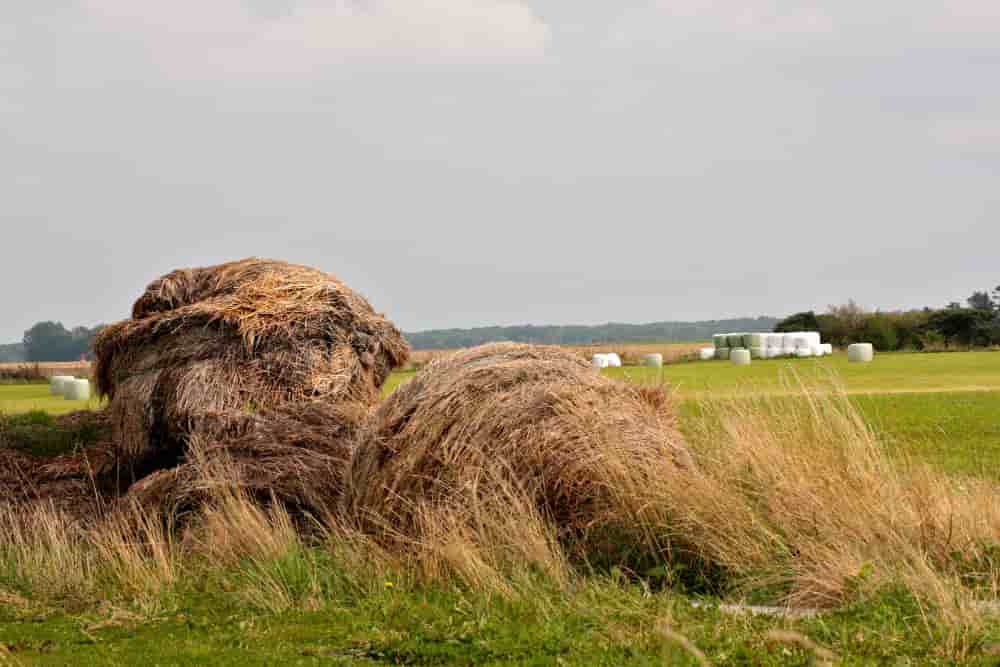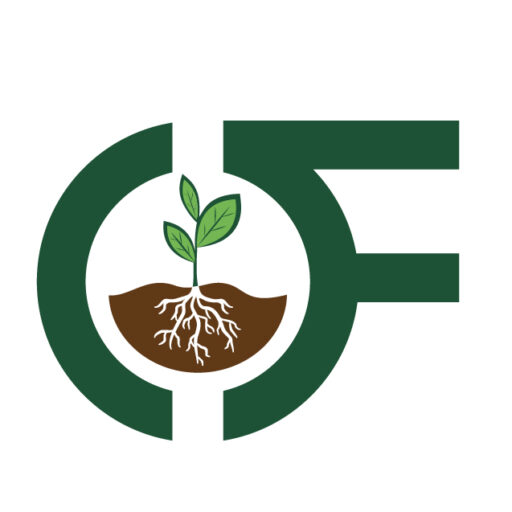Hay Mites, Mold, and Dust: Protecting Your Livestock from Hidden Feed Dangers
Hay is a foundational part of any livestock diet, offering essential nutrients and energy to animals like horses, goats, cattle, rabbits, and more. But while it may appear clean and wholesome at first glance, hay can sometimes hide harmful contaminants that pose serious health risks to your animals. Hay mites, mold, and dust are among the most common issues that livestock owners face—often without realizing it until their animals begin showing symptoms. Knowing what to look for and how to prevent these problems is key to maintaining healthy animals and ensuring the quality of your feed remains high.

(Moldy Hay bales on the field against the sky)
Hay Mites: The Unseen Irritants
Hay mites are microscopic pests that often go unnoticed by the naked eye but can have a big impact on livestock health. These tiny insects thrive in hay that has been baled with excessive moisture or stored in warm, humid environments. When hay mites infest a bale, they can cause discomfort and health issues in animals, including itchy skin, excessive rubbing, and even reduced feed intake due to irritation or stress. In more severe cases, hay mites can lead to secondary skin infections or allergic reactions.
To reduce the risk of hay mite infestation, it’s important to store hay in a well-ventilated, dry space and ensure moisture levels are appropriate during baling. Using a hay moisture meter can help determine the ideal harvest window and reduce the chance of trapping moisture in the bales. Inspect your hay regularly for clumps, odd smells, or irritated animals—early detection is your best defense.
Mold in Hay: A Serious Health Threat
Mold is another hidden hazard in hay that can be harmful when consumed or inhaled by livestock. Mold typically develops when hay is baled too wet or stored in conditions where moisture accumulates. While some mold may be visible on the surface, much of it can remain hidden inside the bale, releasing dangerous spores that can affect your animals’ respiratory and digestive systems.
Symptoms of mold exposure in livestock include coughing, nasal discharge, lethargy, poor appetite, and in some cases, mycotoxicosis—a condition caused by ingesting mold toxins that can damage organs and reproductive systems. To identify mold in hay, look for musty or sour smells, visible white, gray, or black patches, and damp, matted areas inside the bale. Even small amounts of mold can make hay unsafe, so it’s best to discard any contaminated feed.
Prevention starts with baling hay at the right moisture level—typically between 12% and 18%, depending on the hay type. Store hay off the ground in a dry, covered space with good airflow. If you must store hay outside, use breathable tarps and stack bales to allow ventilation. Always rotate your inventory so older hay is used first, minimizing the chance for mold development over time.
Dust in Hay: The Silent Respiratory Risk
While dust might seem like a minor issue, it can have a significant impact on your animals’ health—especially for those with sensitive respiratory systems. Dusty hay often results from excessive handling, poor storage conditions, or baling brittle, over-dried forage. When animals inhale fine dust particles, it can trigger respiratory conditions such as chronic coughing, nasal irritation, or even equine asthma, also known as “heaves” in horses.
To check for excessive dust, shake a flake of hay and see if a visible cloud forms. If it does, the hay may be too dusty to feed safely. Broken stems, powdery residue, and compacted material inside the bale are other common indicators. For animals prone to respiratory issues, consider soaking or steaming hay before feeding, which can help minimize dust and allergens. Better yet, work with a trusted supplier who prioritizes proper handling and storage to deliver low-dust, high-quality hay from the start.
How to Inspect Your Hay Properly
Routine hay inspections are essential to protecting your livestock from mites, mold, and dust. Every time you open a bale, take a few moments to inspect it thoroughly. Look for signs of mold, check for any odd odors, feel for damp or compacted spots, and assess for dust content. High-quality hay should smell fresh, be free from clumps or discoloration, and have a vibrant green color. Avoid feeding hay that appears brown, has an unusual odor, or is excessively dusty or damp.
Keep a simple checklist to guide your inspection process:
- Break open the core of the bale and check for hidden mold.
- Shake a small section to see if dust is released.
- Look for signs of hay mites or irritated animals after feeding.
- Smell for any sour or musty odor that might indicate mold growth.
- Feel for moisture levels or tightly packed sections that could signal poor baling conditions.
Taking this extra step helps you catch potential issues early, avoiding health problems and costly veterinary visits down the road.
Why Quality Hay Matters
Feeding high-quality hay isn’t just about nutrition—it’s about protecting your animals’ long-term health and ensuring your operation runs smoothly. At Ohana Farms, we take pride in offering hay that’s clean, nutritious, and free from hidden dangers like mites, mold, and excessive dust. Our hay is harvested and baled under optimal conditions, stored properly, and inspected regularly to meet the highest standards in the industry.
When you choose Ohana Farms, you’re choosing a trusted partner in your livestock care. Whether you’re feeding horses, goats, cattle, or small pets, we’re committed to helping you provide the safest, healthiest feed possible.
Final Thoughts
Hay mites, mold, and dust may be hard to detect, but their effects on livestock health can be serious and long-lasting. By staying proactive, inspecting your hay regularly, and working with a reliable hay supplier, you can avoid these hidden feed dangers and keep your animals in top condition. If you’re ever unsure about the quality of your hay or need advice on best practices, our team at Ohana Farms is here to help.

